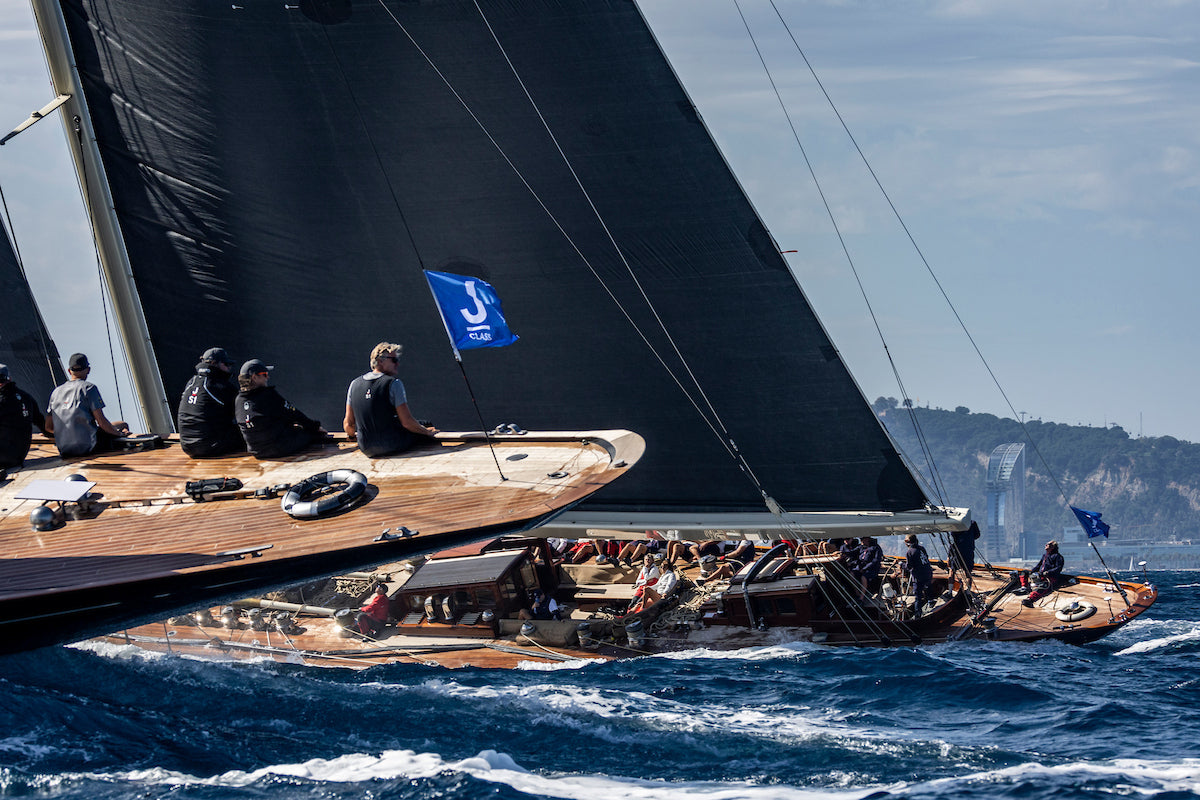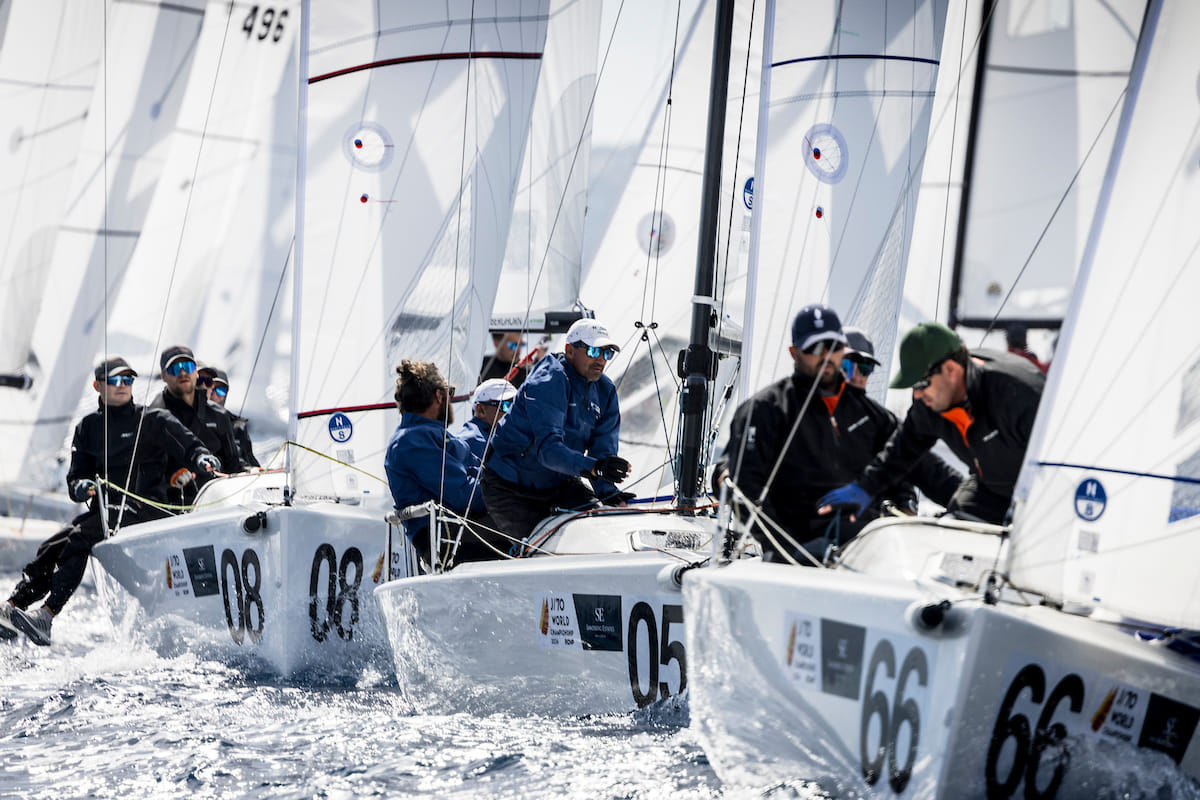NORTH HELIX POWERS IMOCAS
NORTH HELIX WITH LOAD SHARING POWERS IMOCAS
North Head of R&D Gautier Sergent Explains Why Helix Is Delivering Results

The newest generation of foiling IMOCAs are fast, exciting, and awe-inspiring. North Sails is helping six new IMOCAS, as well as older boats which have foil upgrades, prepare for the 2020 Vendee Globe, and the addition of Helix has reset the offshore performance benchmark.
We called up Gautier Sergent, North Sails Head of R&D, who works closely with the IMOCAs. Gautier explained that as the sailors learn just how hard they can push these machines, Helix is raising expectations even further than expected.
Hi G. Thanks for taking the time to chat with us. What are your first impressions of Helix sails for the IMOCA so far?
Immediately the potential of these sails is noticeable. IMOCA boats are limited in their rigging loads with the One Design rig, and this is where Helix excels. The best test so far was the Defi Azimut where North-powered teams, all sporting Helix sails, claimed the top four spots.
Helix is not new for North Sails; we have made a few hundred sails and we weren’t jumping into the unknown. But it’s still early stages of this next Vendee cycle and we keep learning about the boats, the sails, and how to best adapt the Helix concept to each sail type and different conditions. Gautier and the France-based North team have spent countless hours working alongside the yacht design teams on perfecting the models to understand the requirements. It is now time for the much-awaited reality check. As the IMOCAs will be used solo in the Vendee and then crewed in the Ocean Race, we’re focused on understanding things you can handle solo vs. what you can do crewed; parameters which are hard to capture in the numerical world. It is not a question of Helix or not Helix, it’s developing the right sail for both types of sailing. Our question is, how much Load Sharing do we put into each of these sails; the fine details of depth, draft, luff round, luff rope, etc.

Can you describe Load Sharing Technology in your own words?
Load Sharing is how much load we design the sail to carry versus how much the luff rope or forestay takes. It sounds simple and it is simple. The trick is to find the proper ratio for the intended use and how this affects the sail shape. You also need to find the right luff rope stiffness so it interacts with the flying shape through the range of conditions.
Why is Helix with Load Sharing beneficial for an IMOCA program?
We knew that Helix would suit the IMOCA for a few reasons. First, Helix covers a wide range of expected conditions for a given sail. Sail changes in the IMOCA are very expensive, as we saw in the recent Defi Azimut. With Helix, you can focus on boat speed across the wider range and not lose miles because of costly sail changes.
The second reason is the load limit on the One Design rigs as opposed to the virtually limitless amount of righting moment the foils can generate. The more load we can move into the sail, the more beneficial it is when the boat is up on its foils as this limits the load on the rig without affecting the resulting sag of the luff.
And finally, with the dynamic nature of these boats, it is important to have very little sag so the flying shape is locked in, and converts any change in AWS into forward, not side force. Because the IMOCA boats are not allowed to have any elevators, sailing in an offshore sea state makes for a rodeo-like a ride; sharp accelerations followed by just as sharp decelerations, and very dynamic pitch and roll. Keeping the sail forces projected forward quiets the boat motion and makes for faster average speeds.
What performance gains does Helix deliver?
SPEED! SPEED! AND MORE SPEED!
Helix brings versatility and trim-ability through reduced tack load, so you can adjust the flying shape to your conditions. The IMOCA class has a sail inventory of just eight, and sail changes are very expensive, especially as the boats are much faster than the previous generation at some angles. Miles tick away when you sail 90 degrees from the course and your friends are on course doing 25+ kts…
3Di is particularly suited to Helix because of its unmatched stretch-to-weight ratio. A small adjustment makes for a noticeable change in flying shape. It is also able to handle the high loads while keeping the sails light. Not to mention the high resolution of fiber orientation and density to handle secondary off-axis load when furling.
The other major parameter is that the boats have to work in displacement (non-foiling) mode as well as on their foils. That means big changes in AWS (and to some extent AWA). Helix sails provide steady power to the boat, keeping you sailing fast on average rather than a burst of speed and then crashing off your foils.
What’s up next for the IMOCA class and how is North Sails helping prepare our clients?
The next big test will be the Transat Jacques Vabres, which begins at the end of October. This will be the first proper offshore race for the new IMOCAs and their new foils and the older boats with their retro-fitted foils.
The new sails have been put through their paces throughout the summer with a few training camps, and a first real test at the Defi Azimut. Our North team in France have been doing a lot of sailing with the teams to help them dial in their understanding and performance of the Helix Sails, and also to fine-tune the sail to their own boats. All this work helps North Sails better understand how the boat behave in real-life and in various conditions. We have collected some sailing data, exchanged with the sailors, identified some gains and things to improve, and recalibrated the models to work on squeezing out extra percent of gains. The North service team has been all hands on deck, going through sails for a simple check over and final tweaks.
The TJV is a major race and a highly sought after prize, but it is only a stepping stone on the road to the Vendee Globe. So for us and teams alike, the idea is to make sure we capitalize on this precious racing time. The race is double-handed so the boats can be sailed reasonably aggressively and with a slightly smaller penalty on sail changes.




























